Snout Beetle Damage Done to Aloes
The culprit
Having lost quite a few aloes to what I assumed was some sort of disease, I was at my wits end as to how to prevent any further damage. Eventually I scooped out the gooey mess and discovered a wrinkly, cream-coloured maggot, nestling deep within the crown. The culprit, I discovered, was the pupa of a snout beetle. According to Wikipedia, these beetles belong to the Weevil family which is the largest of any animal family, with over 40 000 species worldwide. The only snout beetles I had previously come across are those tiny weevils that infest grain products that get 'lost' in the back of the kitchen cupboard. Looked at closely they have pronounced little snouts, hence the common name Snout beetle.
It seems that quite a few species of snout beetle attack the aloe as I have come across specimens ranging from 3 to 30 millimeters in length. At first I threw any damaged aloe I found into the fire-heap, thinking the damage was automatically the death knell of the plant. However, there are solutions.
Early detection
Early detection of an attack will keep damage to a minimum and the plant will recover reasonably unscathed. The earliest sign, even before the eggs have been laid, are unsightly depressions on the leaves where the adult beetle has been grazing. These soon turn black. Any depressions appearing on the leaves indicate the presence of snout beetle. As they are nocturnal, you will not see them in action unless you go out with a torch. I have not yet been able to prevent an attack by removing the beetle - I simply have not been able to find them. However, once you are on the alert, you will be able to prevent extensive damage.
Most attacks occur in the middle of the plant so be on the lookout for dying leaves and black colouring in the center of the crown. In large aloes, eggs will sometimes be laid in the base of a leaf and occasionally eggs will be deposited in the stem below a leaf, so it is necessary to check under leaves as well.
Taking action
When you see the tell tale signs, remove the center leaves of the crown - they usually come out easily because they are starting to rot. You will probably have to remove a few of the surrounding leaves as well. Using a screw driver or other similar weapon (I even use a strong piece of stick at times), remove the mess of faeces and rot until you find the maggot/s. You need a strong stomach for this and it took me a while to get over the heaves. Even as I write I cringe. Hook the maggot/s out and destroy. They have an extremely tough skin so I have learnt not to make my life worse by trying to squash them. Mostly I shove them into the soil with whatever tool I am using. You may also note a certain amount of ant activity, as well as a host of tiny black weevils scattering out of the mess.
Clean out the cavity, trying not to damage the center any further than necessary. Don't use a knife as it will do even more damage. A strong jet of water will wash away the mess.
Once this is done I leave the plant alone to make its own recovery. Aloes quickly ooze gel which dries to a hard, black covering which protects the damaged area from moisture and further rotting.
The chemical route
As a preventative, spray the aloes with with one of the commercial insecticide products or dust with insecticide powder on a regular basis. Not all of these preparations are effective against snout beetle, but seeing that I have not taken this route, I can't help with brand names. Ask at a hardware or nursery.
Early on I was given the following advice as being the only way of getting rid of this pest:
When you see the tell-tale signs of infestation, fill a syringe with a long needle with a liquid insecticide and inject the mixture into the center of the crown. This will kill off the maggots and your aloe will recover.
As access to injection needles of sufficient length for all but the tiniest of aloes is rather limited, I soon gave up on this method. I also still felt the need to clean out the mess anyway.
Terminal damage
In my large area of veld garden of over 4 acres (16 000m²) I lose over 30 aloes every year as I try not to interfere with this part of the garden at all. Most of these are Aloe maculata (Soap aloes) and quite a few are Aloe striata (Coral aloes). The maggots burrow deep down into the base of the aloes and few of them recover from this onslaught. One of the smaller Aloe barberea was severely damaged. It did put eventually out three shoots but I think a tortoise ate them off and eventually it succumbed.


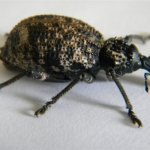
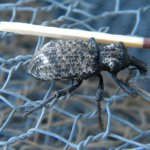
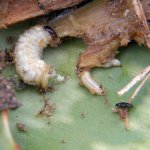
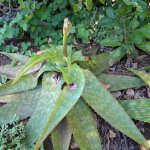
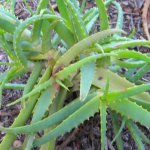

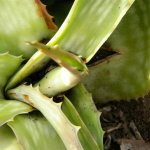
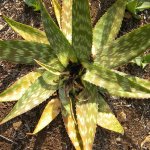
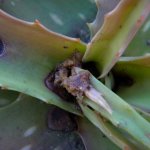
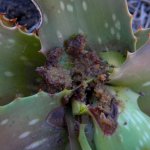
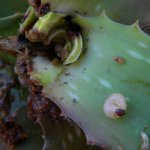
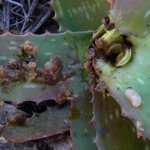
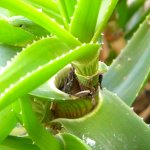
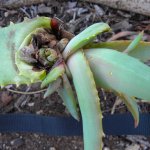
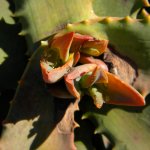
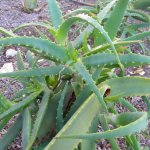
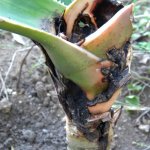
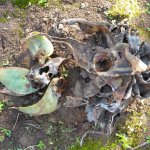
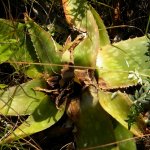
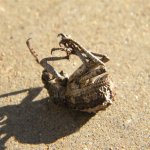
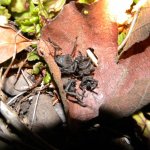



Add new comment